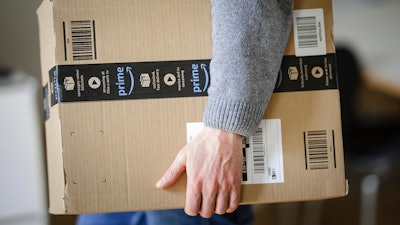
The recent Coronavirus disease (COVID-19) pandemic is radically reshaping consumer behavior. According to a study from First Insight, more than 40% of shoppers say fears have already impacted their buying decisions. More specifically, 29% said they were using buy online services to have products delivered to their homes, while 18% preferred curbside pickup. Further complicating the situation are the decisions of some local and state legislatures to order closures of “non-essential” business to in-store shoppers.
What this situation has also reshaped is the omnichannel experience. Even the most technology-savvy retailers and quick-serve restaurants have found it extremely challenging to make the shift to pick-up and online-only channels in the wake of this pandemic. Most well-prepared chains only have a certain number of trained employees and use-ready devices in each physical location, and that finite bandwidth is being pushed to the max. Even Amazon is the midst of an unprecedented hiring spree in attempts to meet the sudden surge in demand.
That might seem antithetical – that Amazon is on a frenzied hiring spree amidst news of closures and layoffs from businesses large and small. Their response underscores a fundamental truth—demand is still there, and even the most agile and flexible companies are strained to meet the shift in purchase behavior. Of course, rapidly scaling retail operations is easier said than done. Navigating sudden changes to the way your workforce operates taxes personnel, technology, and most importantly, capital. Three critical mobile programs that can help are:
· Buy online, pick-up in stores (BOPIS). As stores are gathering places of more than 10 people, essential service stores like grocery, pharma and big box retailers are coming under increased pressure to expand their throughput of customers and orders, maybe even close their doors to foot traffic entirely. Leveraging mobile devices to scale BOPIS capability is paramount to handling greater volume of orders curbside. Retailers will need the ability to obtain more mobile devices for current stores or stand-up capability in less densely populated stores that previously didn’t have the capability.
· Mobile point-of-sale (mPOS) programs. When restaurants and retail locations are closed to foot traffic for containment, then drive-thru or drive-up becomes the only available option, and standing up a device that can take orders and payment at the same time offers the ability to continue to transact business.
· Mobile device-as-a-service (mobile DaaS) program. No matter where your mobile needs are – in the store, supply chain, distribution, delivery, healthcare or ‘pop-up’ locations, mobile DaaS programs enable you to bring on new devices for a single price per month that covers the device and the supporting services. No capital outlay and a program that can scale with your needs.
Let’s not forget, the downstream impacts that are a result of shoppers “stocking up” everywhere for a long “at-home” stay. The supply chain is also strapped as more trucks and drivers hit the highways. Drivers will need to be equipped with mobile devices to manage and log their drives – even with the recent suspension of Hours of Service (HoS) regulations by the Federal Motor Carrier Safety Administration in support of COVID-19 relief. Distribution centers will be turning supplies faster, and the need to bring on temporary staff and equip them with devices is important.
Inside organizations, IT departments are consumed with maintaining applications and networks as well as supporting remote work environments. Most don’t have the capacity to scale up mobile programs and may very likely be taxed supporting the current environment. Outsourcing help-desk end-user support for mobile can free up IT resources to focus on more pressing issues.
All of these impacts require the ability to rapidly scale technology, and partnerships with established service providers with expertise in mobile and experience in retail, transportation, supply chain logistics and field services are key. Mobile managed service (MMS) providers, for instance, can answer the immediate need for holistic solutions to help you ensure business continuity in times of extreme disruption.
Another advantage of working with an MMS provider is the flexibility of financial options to facilitate temp workers or flexible Opex financial models to help with unplanned budgeting.
Even if you’re in the midst of crisis mitigation efforts, you’ll need the right business continuity plan for the post-COVID-19 landscape. Consumer behavior will evolve as shoppers become accustomed to the convenience these mobile programs have come to offer. Even now, major players in the grocery and retail verticals are already looking ahead by significantly bolstering last-mile delivery capabilities. Is your operational planning fully accounting for the post-COVID-19 retail environment?
The best way to quickly execute on mobile blueprints is by leveraging the support of an MMS provider. This can quickly scale up mobile operations to get devices provisioned with your basic applications into the field for employees to transact more mobile business, call in temp labor, track inventory, manage vehicles or move employees to different locations quickly. Mobility exports can provide ready use mobile devices and support for employees who rely on those devices in the field. This requires rapid deployment at-scale to meet consumer needs and give frontline employees the tools they need.
The only way to futureproof your efforts is to execute mobile blueprints that are purpose-built to streamline your operations, enable operational flexibility and deliver true value for both your organization and your customers.














